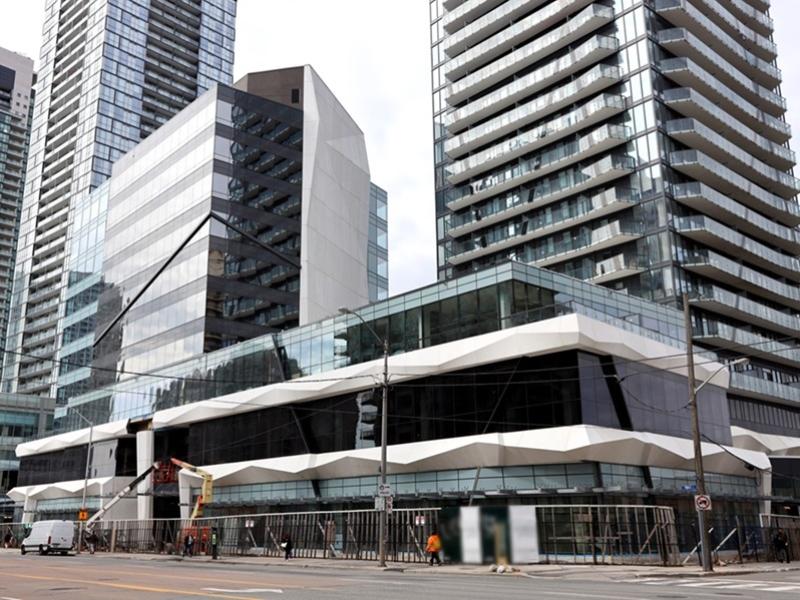
AAA assets in downtown Toronto, Montreal and Vancouver have substantially outperformed other office inventory in vacancy, availability, rental resilience and tenant space usage over the past five years and are poised to remain the cornerstone of demand for owners and occupiers alike.
The difference in vacancy between premium and lower-grade buildings in Canada’s three largest downtowns (Toronto, Montreal and Vancouver) has reached a record high of 890 basis points as demand is increasingly consolidating around top-tier, best-in-class spaces, according to a new Colliers Canada report.
The vacancy rate for AAA office buildings is 7.1 per cent versus 16 per cent for non-trophy buildings in Toronto, Montreal and Vancouver, the report states.
Many tenants prioritize quality, location and amenities over cost alone.
“Demand in premium towers is remaining stable and strong despite the current market challenges we're facing,” report author and Colliers office research lead Eliezer Timolien told RENX.
“If you’re holding a prestige tower in a really good location with strong amenities, then you're in a good position, though you're not totally in the clear. You still need to stay competitive on your net effective rents, mainly because incentives like tenant improvement allowances and rent-free periods erode those margins.”
Office market conditions favour tenants
Things are more complicated for owners of class-B and even aging class-A buildings, as they face more pressure as the disparity between their product and AAA assets widens.
Class-A and -B offices are the primary contributors to elevated vacancy rates. The current spread is expected to peak as premium supply tightens, which should drive renewed interest in broader downtown inventory.
“Tenants aren't chasing prices anymore,” Timolien said. “They really want experience, flexibility and quality, and that's forcing owners of lower-tier assets to rethink the value proposition.”
Tenants, especially those who are ready to move or negotiate a new lease, are in a strong position in today’s office market.
“Smart tenants can upgrade their space without necessarily increasing the spend,” Timolien said, noting face rents have declined over the past two years.
Impact of back to office mandates
As organizations rethink how and where work gets done, there’s growing interest in spaces that can support flexibility, collaboration and focused work.
While small to mid-sized firms continue to approach return-to-office policies cautiously -- often out of concern for employee retention -- larger occupiers have been consolidating specialized teams into centralized, high-performance buildings such as CIBC Square in Toronto, Place Ville Marie in Montreal and Bentall Centre in Vancouver.
More companies and organizations are mandating employees to be in the office more, which Timolien believes will be a big driver in helping the office market rebound from its post-COVID-19 pandemic slump.

“There is still some backlash between employers and their employees in terms of wanting to go back to the office, but I think there's an inevitability that it will happen,” he said.
“Not every company is gearing up for return to office, but those that are -- especially the larger ones -- are going to look for space.”
Some landlords are repositioning full-floor vacancies into turnkey, pre-built suites that appeal to small and mid-sized tenants seeking plug-and-play solutions with premium finishes and experiential amenities.
Some institutional owners are looking to divest under-performing assets and, in certain instances where they can’t get the offers they’re seeking, are considering converting office buildings to residential use.
Office availability in Canada’s three biggest cities
Vancouver’s AAA market is fundamentally improving faster than most major cities following a 550-basis-point drop in vacancy in the last year, coupled with about 380,000 square feet in net positive absorption in the same period.
Montreal’s spread peaked in 2024 at 100 basis points, but has since begun to shrink, with an 80-basis point decline in availability. This trend suggests renewed interest in non-trophy properties, mainly premier Class-A facilities, amidst a strained downtown market.
Toronto saw a significant spread in the beginning of the year, fuelled by a 210-basis point increase in non-trophy availability year-over-year. AAA opportunities declined for the first time since the first quarter of 2020, translating to a 26 per cent decline in premium space in the Financial District.
Timolien said Toronto has also experienced an increase in companies buying office buildings, primarily lower-tier assets, and becoming owner-occupiers.









